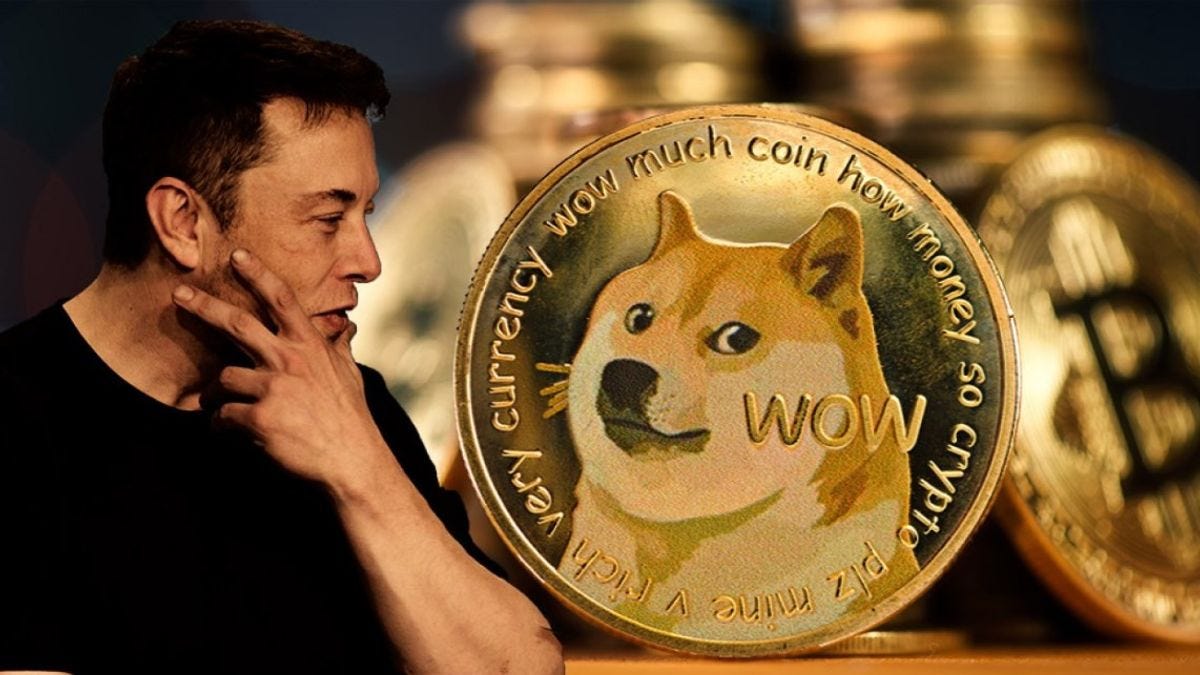Blitz News Digest
Stay updated with the latest trends and insights.
To the Moon and Beyond: Dogecoin's Wild Ride
Discover the thrilling journey of Dogecoin as it rockets to new heights and explores what lies beyond the moon!
The Rise of Dogecoin: How a Meme Became a Multi-Billion Dollar Asset
Dogecoin, originally created as a joke in December 2013, has skyrocketed from its meme origins to become a multi-billion dollar asset capturing the interest of investors and enthusiasts alike. Inspired by the popular Doge meme featuring a Shiba Inu, it was intended to provide a fun and accessible introduction to cryptocurrency. However, with its vibrant community and strategic endorsements from influential figures, Dogecoin has gained significant traction in the crypto market, demonstrating the power of community engagement and social media in the digital age.
As Dogecoin began to rise in popularity, it transformed into a legitimate contender within the cryptocurrency space. Factors such as low transaction fees, a supportive user base, and widespread use in online tipping and charity initiatives have contributed to its appeal. The enthusiasm around Dogecoin hit new heights in 2021, fueled by viral social media trends and notable celebrity endorsements, further solidifying its status as a multi-billion dollar asset. The story of Dogecoin serves as a fascinating case study on how a simple meme can catalyze financial opportunity and community-driven momentum.

What Drives the Price of Dogecoin? Understanding Market Trends
The price of Dogecoin, like many other cryptocurrencies, is influenced by a multitude of factors that contribute to market dynamics. One of the primary drivers is market sentiment, which can be swayed by social media trends, influencer endorsements, and overall public perception of cryptocurrency. Notably, the involvement of high-profile figures, such as Elon Musk, has historically led to significant fluctuations in Dogecoin's value. Additionally, the broader market trends in the cryptocurrency space, including regulatory developments and technological advancements, play a crucial role in shaping investor behavior.
Another critical aspect that affects Dogecoin's price is its supply and demand. Unlike Bitcoin, which has a capped supply, Dogecoin has an inflationary supply model that allows for a continuous increase in its circulation. This means that as more coins enter the market, the balance of supply and demand can shift, impacting its price. Furthermore, trading volume, liquidity, and exchange listings also contribute to the market behavior of Dogecoin. Understanding these elements can help investors make informed decisions about when to buy or sell this unique cryptocurrency.
Is Dogecoin the Future of Cryptocurrency? Expert Opinions and Predictions
The rise of Dogecoin from a meme-based cryptocurrency to a serious contender in the crypto market has ignited discussions about its potential future. Many experts argue that while Dogecoin's popularity is undeniable, its inherent inflationary model and lack of technological advancements compared to other cryptocurrencies may hinder its long-term viability. According to cryptocurrency analyst Jane Doe, 'Dogecoin could have a place in the cryptocurrency ecosystem, but it will need to evolve significantly to compete with the likes of Bitcoin and Ethereum.'
On the other hand, optimists believe that Dogecoin's robust community and endorsement by influential figures, such as Elon Musk, could catapult it towards becoming a mainstream currency. Predictions range from Dogecoin achieving significant integrations in commerce to potentially becoming a key player in the decentralized finance (DeFi) space. Industry veteran John Smith states, 'If Dogecoin can capitalize on its current momentum and adapt to the changing landscape of cryptocurrency, it might just surprise us all.'